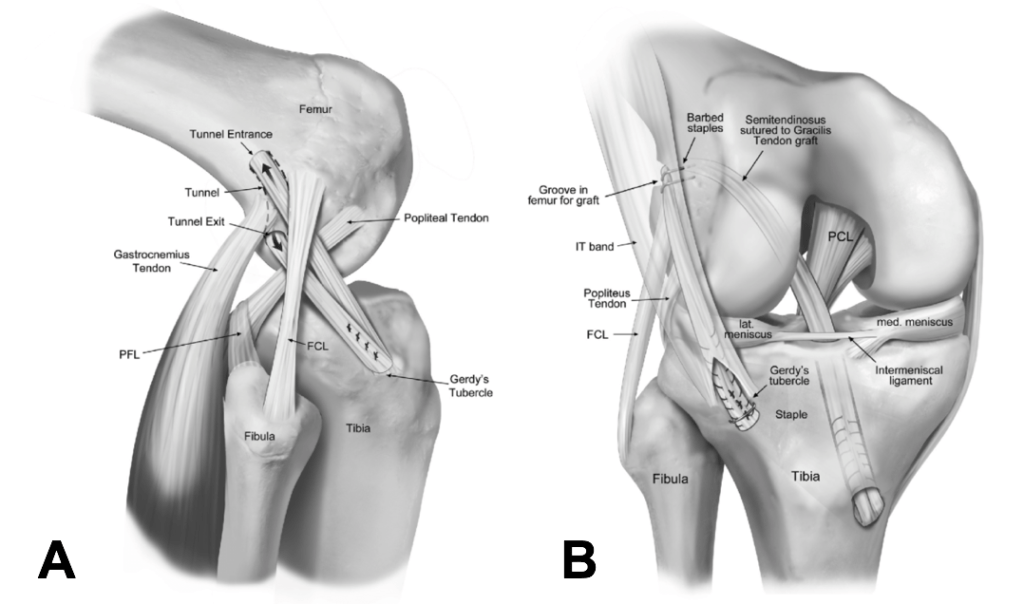Anterior cruciate ligament (ACL) injuries are among the most common injuries resulting from sports in the United States, affecting athletes and active people alike. The ACL is a vital ligament inside the knee joint. It’s responsible to provide stability and support moves like jumping, pivoting and sudden directional shifts. ACL reconstruction and surgery is often required to repair knee function following tears due to its poor ability to heal.

Image credit: jeremyburnhammd.com
Knowing the ACL reconstruction procedure, the role of an expert ACL surgeon, and the recent advances in surgical techniques will allow you make an informed choice about the treatment you’ll receive.
The ACL’s role and the reason Reconstruction is frequently required
The ACL is the ligament that joins the bone of the femur with the tibia. It plays a significant part in stabilizing your knee while you move. If the ACL is damaged, whether caused by a sudden twist or landing awkwardly, or intense sports, the knee’s strength is significantly compromised. The signs of an ACL tear often are swelling, pain and a feeling of the knee “giving out” when you exercise.
ACLs aren’t as self-healing as other ligaments. Therefore, surgery is the only effective option to treat them. ACL Surgery typically involves either repairing the ligament in rare cases or reconstructing it using a tendon graft.
What is ACL Reconstruction Surgery
ACL reconstruction is the replacement of a torn ACL ligament with a brand new transplant. The graft may come from the body of the patient or from a different donor. The patellar and quadriceps tendon (BTB) are two of the most popular grafts. Each graft type has its own unique benefits.
Quadriceps Tendon: This graft is well-known for its strength and minimal complications with the donor site. It is a reliable stabilization for athletes who have returned from sports that are high-impact.
Patellar Tendon (BTB): It is often referred to as the “gold standard” in ACL reconstruction, this graft is ideal for people who need the most stability.
Dr. Burnham is a fellowship-trained ACL Surgeon who has completed extensive research into the grafts. The results are fantastic in terms of knee durability and stability.
Advancements in ACL Reconstruction Techniques
ACL reconstructions historically have placed the ACL graft in an non-anatomic place, which implies that it wasn’t aligned with the original ACL’s normal position. This could lead to inadequate results, which included lower stability as well as a higher risk of re-injury. But, advances in imaging technology and surgical research have changed how ACL reconstruction is carried out.
ACL surgeons today, including Dr. Burnham, use advanced techniques to repair the ACL exactly in the spot it was. This anatomical placement aligns the new ligament to the knee’s mechanics and improves stability and function. The advantages of this accuracy include:
Reduced chance of re-injury
Better long-term knee health
The lower the risk of developing arthritis
The focus is on precision: the importance of the sizing of grafts
The success of an ACL reconstruction is contingent on the proper size of the graft for the patient. Utilizing MRI imaging, in conjunction with direct surgical observation, the surgeon is able make the graft specific to each person. A graft which is too small might not be able to withstand the strain as a graft is too big can result in complications. ACL surgeons can customize the procedure for each patient to improve the healing process and function.
Why Choose an ACL Surgeon with a Fellowship Training?
The expertise of your surgeon plays a significant part in the success of your ACL surgery. Fellow-trained ACL Surgeons like Dr. Burnham have extensive experience and have specialized training for treating complicated knee injuries. The advanced surgical techniques they employ assure that every patient receives customized treatment, leading to greater results.
Recovery and Long-Term Benefits
When they have a proper treatment plan, patients who’ve had ACL reconstruction can return to their previous levels of activity gradually. Physical therapy plays a crucial part in the recovery process. It helps to strengthen the surrounding muscles and improve the range of motion.
With the advancements in ACL surgery Patients are now enjoying more long-term benefits, such as lower rates of re-injury and better knee stability. Modern ACL reconstruction methods can help you resume your active lifestyle, or get back into sports.
Final Thoughts
ACL reconstruction is a vast different from what it was in the past thanks in part to the advancement of research, modern technology, and fellowship-trained ACL specialists such as Dr. Burnham. Modern surgical techniques focus on accuracy, precision, and customized care, giving patients the best chance for a successful and long-term healing.
Consult with an ACL surgeon if you’ve suffered an ACL injury. They can help you through the various options to get the best result.
